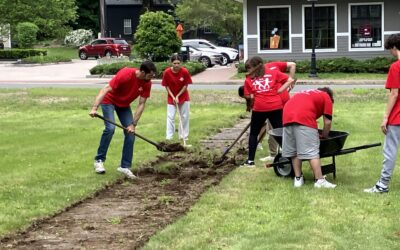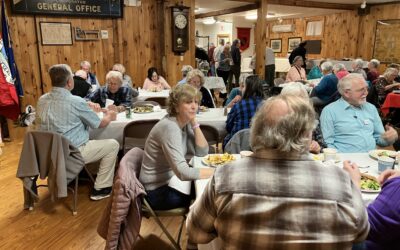We started this challenge by locating the Deep River. Now it’s time to talk about the factories that took their power from that river. Unfortunately, most of them are no longer standing due to age or fire. The Pratt, Read & Co. Factory built in 1881 still dominates Main Street and is a testament to the people in our community who value the past and give new life to old buildings. This factory was converted into condominiums and is near full capacity. It has changed over the years with the removal of the tower in 1914 when it became a danger to people passing by.
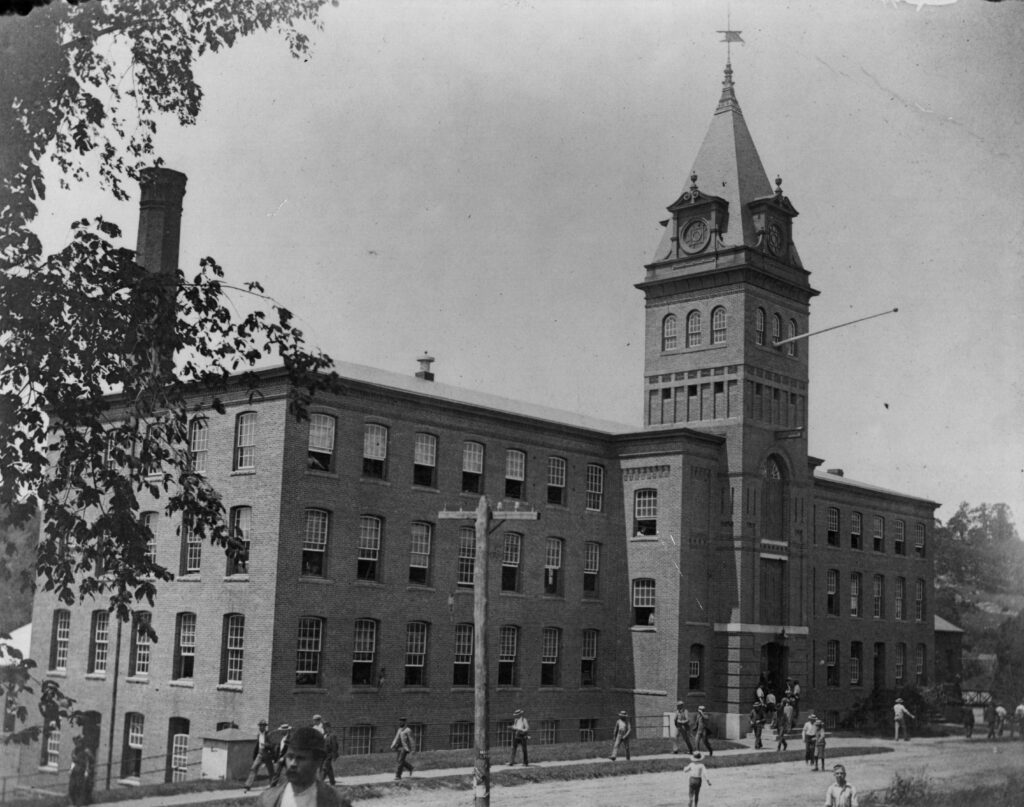
So, take a walk down Main Street, check out the building, turn the corner onto Bridge Street and take a look at the Deep River and the Player Action Piano building sometimes known as UARCO or Tri Town Plastics. Many of the houses you are passing on the other side of the road belonged to factory workers. For a longer adventure read on.
George Read built his comb making factory near this location in 1816. It was a wooden clapboard two-story structure that burned to the ground in a spectacular fire that smoldered for 30 days! The Company quickly rebuilt the factory, this time of brick, and continued the operations of making ivory combs and piano keyboards until 1863 when the company merged with the Pratt Brothers to form the Pratt, Read & Company. With the merger, all of the ivory work was moved to the West Shop and the woodworking and assembly business remained in the red brick building until 1936 when another merger, this time with Comstock, Cheney & Co. of Ivoryton, moved all operations to Ivoryton, CT.
The West Shop (Esico-Triton International), Pandemonium Rainforest Project
Originally built by the Pratt Brothers in 1853 for their ivory comb making business, this factory became part of the Pratt, Read & Company complex with the merger in 1863. The ivory combs were cut upstairs and the ivory key pieces were cut on the lower level. Assembly was done in the red brick building on Main Street.
In 1938 this structure was sold to Esico – Triton for the manufacture of soldering irons. The water sluiceway was filled in as the factory no longer needed water for its source of power. The majority of the structure remains unchanged.
This building was purchased recently and will be repurposed once again. Allison Sloane and Kim Olson are working to transform this empty shell into a thriving business once again which will support the Pandemonium Rainforest Project. The PRP is a non-profit organization that helps to rescue and rehabilitate birds and animals of the rainforest. This building is still a construction zone so please keep your distance and be safe.
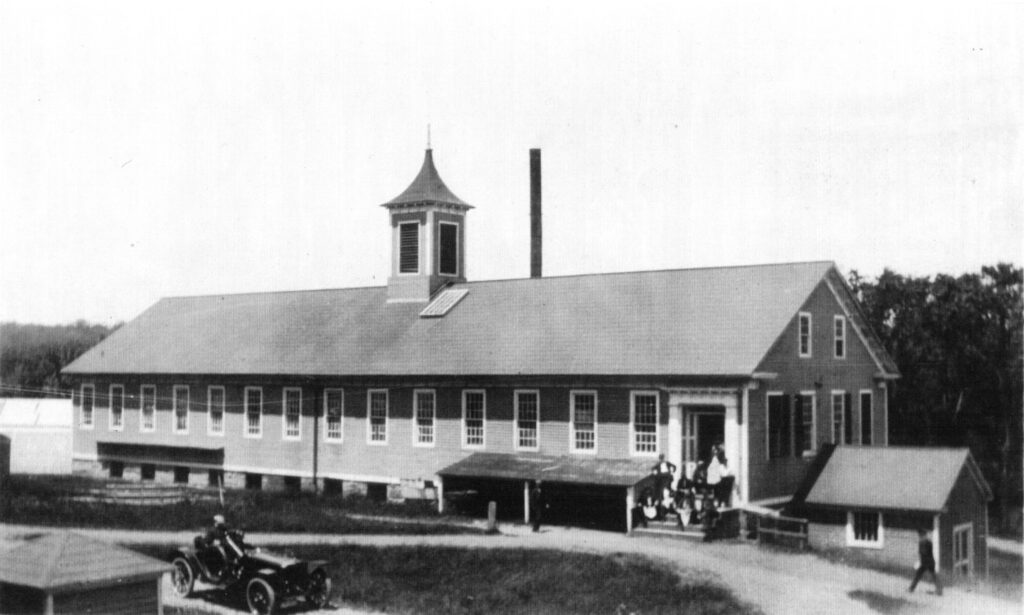
The Player Action Piano Factory later UARCO and today Tri Town Plastics
This is another piece of the Pratt, Read & Company empire that dominated the north end of Main Street for decades. This “modern” building built in 1915, of concrete, was erected to ensure Pratt, Read & Co. a place in the Player Piano market. In its first year of production, it produced 1,900 player pianos and in less than two years was producing nearly 6,000 player pianos annually. Unfortunately, this business lasted only 14 years. Many from the town will refer to this building as the UARCO (United Automatic Register Co. of Chicago) building that made printed business forms. The business closed in 1998. Scott Goodspeed purchased the building in 2000 and refurbished the 70,000 square feet of space to accommodate his new business of custom injection molding with 20 machines and 13 tool makers. The company creates tools and molds plastic parts for a wide variety of industries such as automotive, medical, aerospace, communications, defense, and general industry. The plant operates 3 shifts per day five days a week and employs 75 people. The remainder of the building houses other businesses such as PCI Medical and provides overflow office space for the Town Hall.
The Jennings Auger Bit Factory later called Russell Jennings Manufacturing Co. is currently the home of the Donald Paulson family at 183 Elm Street. Many people associate this company with Chester but, Steven Jennings and later his brother Rev. Russell Jennings operated this factory here from 1837 to 1906 before moving the business to Chester, CT. They manufactured auger bits, a tool every woodworker felt was essential to have in his toolbox. The lip extension bit invented and patented by Rev. Russell Jennings was widely popular and distributed internationally. The Jennings family home, called Fairview, is located on Prospect Street and is currently known as Riverview Lodge.
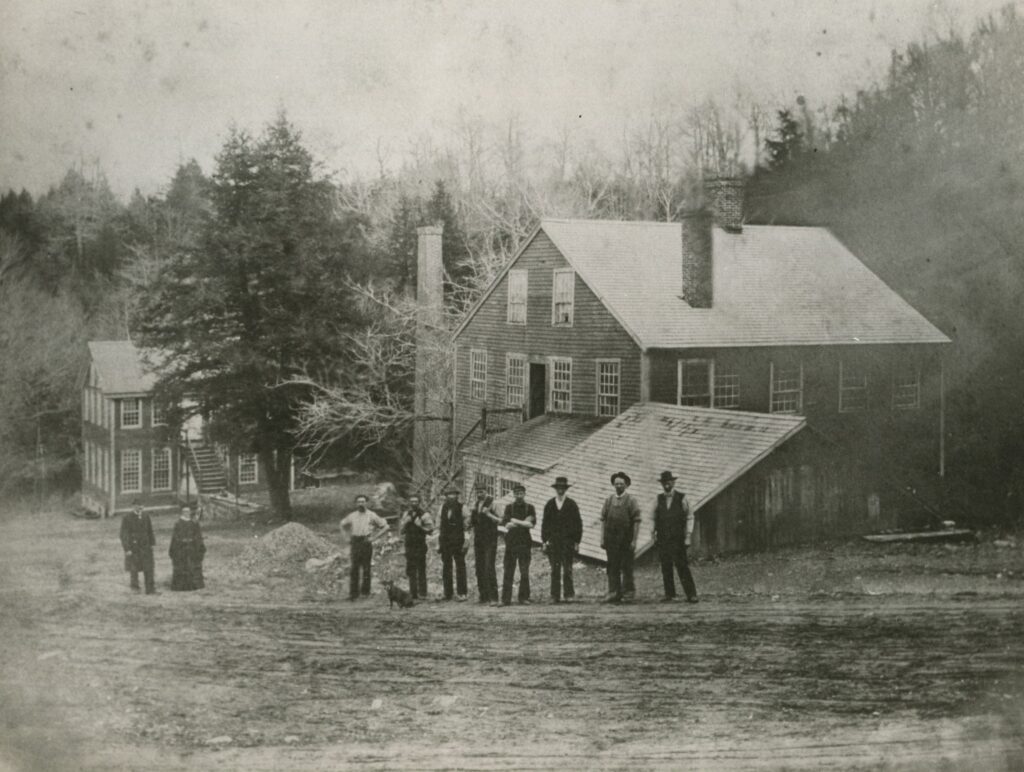
The William and Marvin Woodturning Factory was located on Elm Street at the foot of Hemlock Drive. This had been a manufacturing site since the early 1830s when Frederick Williams and Charles Marvin inherited the factory from Mr. Nehemiah Pratt in 1851. This was an important early industry in Deep River producing all types of wooden handles and spokes, most of which was done by hand. With the invention of the Weymouth Woodturning Lathe in the 1870’s production increased and allowed for a larger variety of work. The turning of lignum-vitae and maple caster wheels was a specialty of the Williams and Marvin Factory, using hundreds of tons of lignum-vitae annually. The firm also used cocobolo wood from Central America, rosewood from Brazil, ebony from Western Africa, and other foreign woods. The maple lumber was bought almost entirely from local lumbermen and thousands of feet were consumed annually. The business burned to the ground in 1914 leaving only the granite foundations that can be seen on either side of Hemlock Drive as a reminder of the factory.

The new exhibit at the Stone House will give you an in-depth view of all of these factories and more. Stop by and see us.

